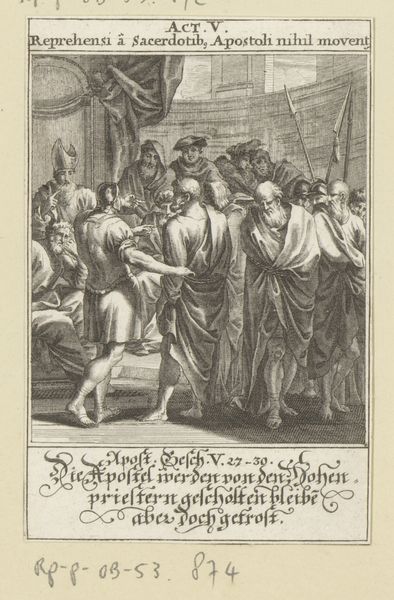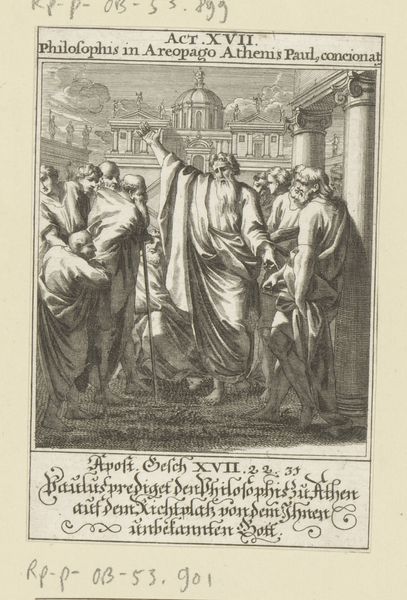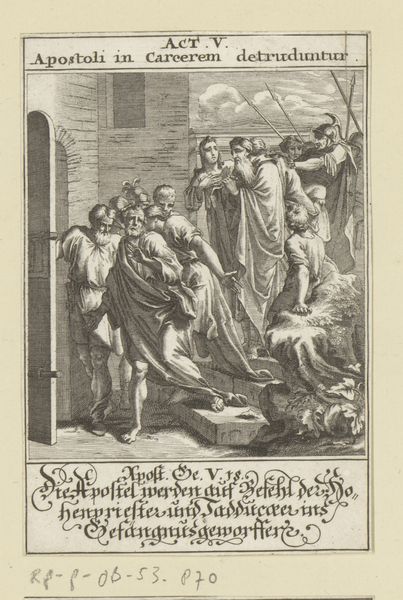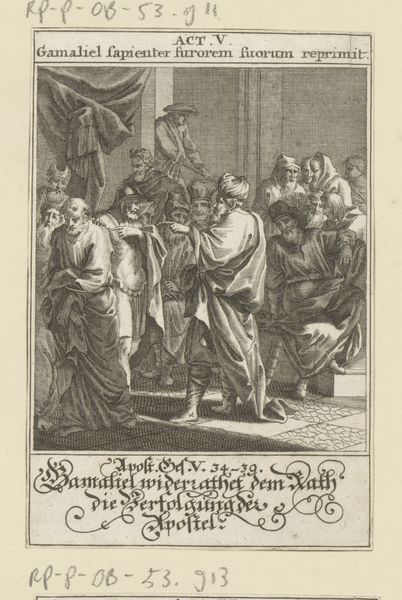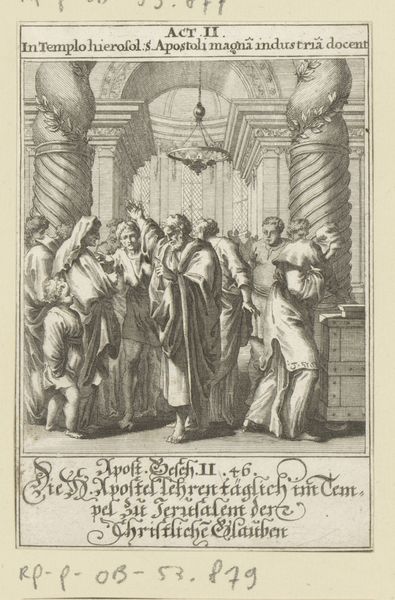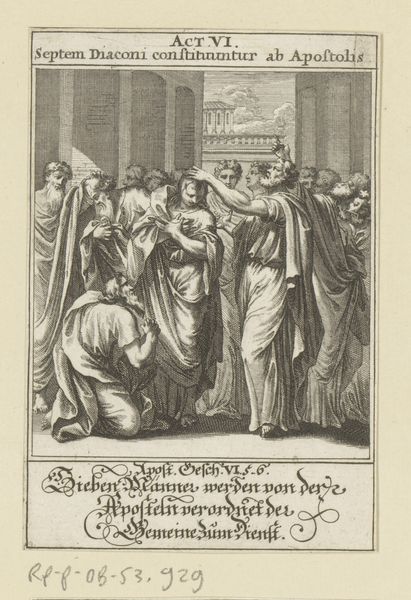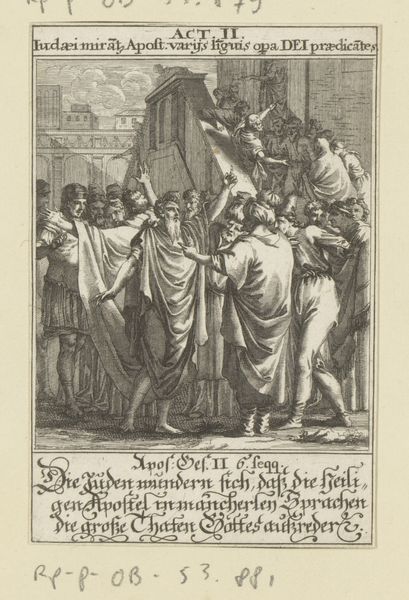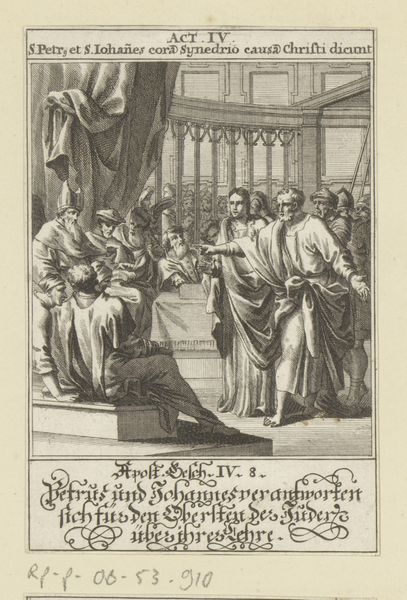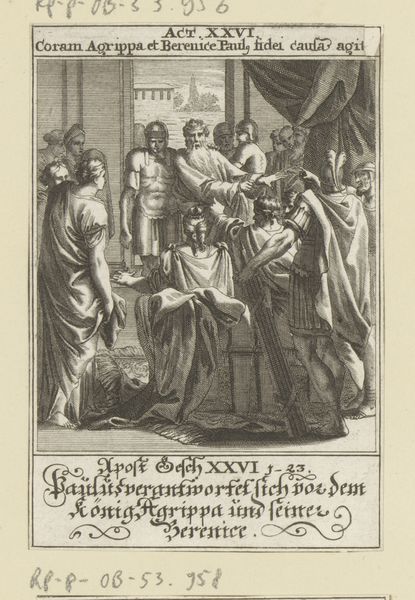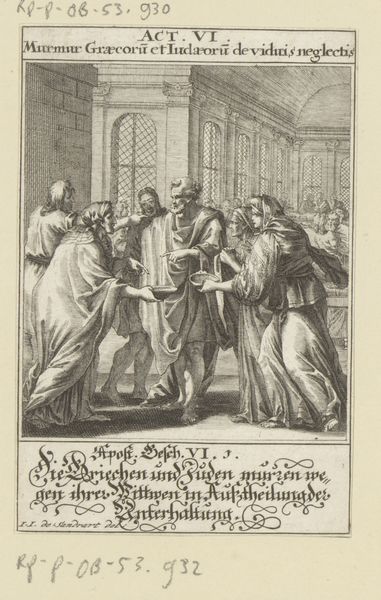
print, intaglio, engraving
#
narrative-art
#
baroque
# print
#
intaglio
#
old engraving style
#
figuration
#
history-painting
#
engraving
Dimensions: height 121 mm, width 80 mm
Copyright: Rijks Museum: Open Domain
Editor: Here we have "Jews Converted by the Words of Apostle Peter," an engraving made around 1697. The figures are so active; they nearly burst out of the frame. How might we unpack this dynamic composition? Curator: Observe how the artist uses contrasting textures to define space and form. Note the smooth, almost fluid lines that delineate the figures' robes against the sharply etched, angular stonework of the architecture. Does this contrast not lend the piece a palpable sense of tension, of dynamic movement held within a rigid structure? Editor: It does! It's like the figures are pushing against the very architecture that contains them. What purpose does that tension serve? Curator: Precisely. Consider the light and shadow—the stark divisions creating pockets of deep black that push the lighter areas forward. Note how Peter’s figure is illuminated, while others are shrouded. This dramatic lighting guides our eye and emphasizes particular narrative focal points within the overall composition. Do you find that light to create a kind of hierarchy? Editor: Yes, it’s as though the light is not just illuminating, but also selecting which figures and which moments matter most. So the contrast between the sharp, dark lines and the smoother textures, together with the directional lighting, work together to build the story. Curator: Indeed. The interplay of these formal elements constructs the very narrative of conversion itself – the drama, the illumination, the turning from darkness. What begins as a historical depiction transforms into a sophisticated play of form and line. Editor: That’s a brilliant insight! Thank you. I definitely appreciate it more when considering how those choices affect the storytelling.
Comments
No comments
Be the first to comment and join the conversation on the ultimate creative platform.
